- Administrator
- Albums and Singles
Campbell Kneale has been enjoying quite an impressive creative rebirth since retiring Birchville Cat Motel and re-emerging as Our Love Will Destroy the World, but he wound up with an extremely difficult predicament on his hands in the process: 2009's Fucking Dracula Clouds pretty much perfected the art of being as gnarled, ugly, and visceral as possible and took guitar-based noise about as far as it could logically go.  Unwilling to repeat himself, these two new albums document Kneale's struggle to emerge from that stylistic cul de sac and find innovative new ways to remain vital and nightmarish.
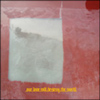
It took me a while to warm to Krayon's Blue Eyes Are My Reward because it feels a bit restrained and scattered compared to past Our Love Will Destroy the World albums.  In fact, the exuberantly strummed acoustic guitar in "Kisses Flaming Hell" approximates what I envision Swervedriver jamming at a beach party might sound like (which is "pretty damn annoying," actually).  However, the rest of the album is pretty unwaveringly excellent despite Kneale's many bold departures from his comfort zone. He does include one characteristically snarling hellscape in the roaring "Triple Encryption Dynasty" that should please anyone hoping for more typical OLWDTW fare, but the remainder of the record is packed full of unexpected surprises ranging from psych-damaged bagpipe drones to tabla-driven ethno-ambiance.  There are also several songs that call to mind a more muscular version of mid-period Zoviet France, melding insistently looping pile-ups of odd percussion, field recordings, and voices with strangled and warped guitars. The fact that very few of these pieces are immediately recognizable as Our Love Will Destroy The World could arguably be considered a flaw, but that is an inherent and unavoidable peril with evolution in general.  This is a very impressive and unexpected effort.

Dekorder's I Hate Even Numbers, on the other hand, is significantly more immediate, distinct, abrasive, and consistent, yet falls quite flat progression-wise.  Thematically, Kneale stays pretty focused on further exploring the possibilities of incorporating thumping beats and deep bass lines to his usual ear-searing, cacophonous onslaught. The dance music elements are generally kept pretty straightforward, like the four-on-the-floor house beat of the title cut, but that seems to be the point: rendering danceable grooves undanceable with shrill feedback, metallic whines, and a litany of non-musical sounds.  Unfortunately, Kneale doesn't quite go anywhere worthwhile with it on the first half of the album, opting to idly ravage unchanging beats without much in the way of pay-off.  The second side of the album is a bit more inventive, as both "Snipers on Skis" and "Twins Like Swans" are built upon unusual mutant-Indian beats, but it still can't escape feeling like a series of underdeveloped song skeletons.  The album's brightest spot is "Tokyo Modern Magic" which marries a somewhat anthemic synth motif to grinding guitar noise and bubbling electronics with some success.  It still fails to evolve much, but it achieves a kind of immersive power simply through sheer density and activity.  I Hate Even Numbers is definitely heavy and attention-grabbing, but its appeal dies rapidly with repeat listens.
Blue Eyes Are My Reward Samples:
I Hate Even Numbers Samples:
 
 
Read More
- Administrator
- Albums and Singles
 I have yet to encounter a disappointing major Dust-to-Digital release, and this three-disc collection of the choicest bits from John Heneghan's archive of early 78s continues that hot streak beautifully.  Focusing entirely on the many facets of romance (and not skimping on the negative ones), Heneghan wisely opts to skip most of the "serious" artists from the era and instead plunges headlong into the most satisfying examples of hillbilly kitsch, Hawaiiana, casual racism, yodeling, clumsy lewdness, and spectacular poor taste that the '20s and '30s had to offer.
I have yet to encounter a disappointing major Dust-to-Digital release, and this three-disc collection of the choicest bits from John Heneghan's archive of early 78s continues that hot streak beautifully.  Focusing entirely on the many facets of romance (and not skimping on the negative ones), Heneghan wisely opts to skip most of the "serious" artists from the era and instead plunges headlong into the most satisfying examples of hillbilly kitsch, Hawaiiana, casual racism, yodeling, clumsy lewdness, and spectacular poor taste that the '20s and '30s had to offer.
The 66 songs of Baby, How Can It Be? are helpfully divided into themed discs labeled "Love," "Lust," and "Contempt."  I found this to be a very helpful feature, as it enables me to skip love and go right to lust and contempt (much like I do in my personal life). That is not to say that there aren't a number of wonderful love-themed pieces, because there are (like Bo Carter's "Baby, How Can It Be?").  However, the most immediately gratifying songs are the cartoonishly embittered and lascivious ones: the album doesn't completely catch fire until the clumsy double entendres, misogyny, and suicide threats start flying.  The way I see it, I can always go back to the conventionally good songs later.
The Lust disc is such a treasure trove of questionable taste that I don't even know where to begin.  Did you know that there's a slang term that means both "cat" and "female genitalia?"  There is!  And Harry Roy and His Bat Club Boys make damn sure that they milk that coincidence for all it's worth.  Those same organs also figure quite prominently into Hartman's Heart Breakers' "Let Me Play With It," but they are stealthily referred to as a yo-yo this time around.  Aside from that, a quick review of the song titles pretty much conveys everything anyone needs to know about the contents: "I Ain't a Bit Drunk," "I'm Feelin' Devilish," "Strut That Thing": the Lust disc is pretty much a steam-clouded window into what it was like to be liquored-up and randy in the Jazz Age.  There are also some great break-up songs mixed in, like Rutherford & Foster's resigned-yet-hopeful "There’s More Pretty Girls Than One."  Additionally, there is inexplicably a very tuba-heavy song about falling in love with a mermaid.  I had difficulty relating to that one.
The Contempt disc also has its share of timeless classics, many of which deal with the trials and tribulations of having an overbearing wife, like "She Ain't Built That Way," "He Went in Like a Lion (But Came Out Like a Lamb)," and the brilliant "I'm Wearin' The Britches Now" (about a "lousy sow, " of course).  Then there is the jawdropping "It's A Shame To Whip Your Wife On Sunday," which points out that are six other days of the week to take care stuff like that (along with gettin’ drunk and gamblin’).  For sheer ridiculousness, though, I was perhaps most enamored of the jaunty big band sing-along "Wimmin-Aaaah!," which comes complete with exaggerated yelps of anguish.  Thankfully, the women also get their say about relationships gone wrong, most explicitly on Hazel Scherf's bluntly matter-of-fact "Married Girls Troubles."  Laura Smith takes a far more direct route, however, with her sassy and melodramatic "I’m Gonna Kill Myself."
Heneghan maintains a remarkably high standard of quality despite the album's enthusiastic devotion to all things base and campy.  No one should pick up Baby, How Can It Be? expecting to find the next Blind Lemon Jefferson (though the actual Blind Lemon Jefferson is present), but the more absurd moments are nicely balanced by a healthy proportion of swinging early string jazz, banjo virtuosos, urbane big bands, heartbroken hillbillies, and world-weary bluesmen.  There are certainly a handful of recognizable names here, like Mississippi John Hurt and Cab Calloway, but they are often eclipsed by those who've been largely forgotten: this show belongs to them.
Much like it is with the music contained within, the emphasis for the packaging falls squarely on character and charm rather than on scholarship or comprehensiveness. Pretty much no background is provided for any of the artists involved, which is no surprise as I can't imagine much is available anyway.  Besides, I can't imagine that there are that many people that are dying to learn more about the career of, for example, The Broadway Bellhops.  Instead, there are some colorful liner notes by Nick Tosches and a detourned cheesecake centerfold by R. Crumb (I am actually a bit surprised John Waters didn't get involved too–seems right up his alley).  Even those touches are pretty superfluous, though: Baby, How Can It Be? is essentially a crackling old-time-y party in a box for sociable types and a handy primer for turning your life into Ghost World for the rest of us.
Samples:
- Hartman's Heart Breakers, "Let Me Play With It"
- Asa Martin, "She Ain't Built That Way"
- Joseph Falcon, "Poche Town"
 
Read More
- Duncan Edwards
- Albums and Singles
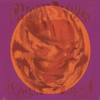 This 1967 recording features an intriguing line-up of alto sax, cello, and two bass players. Since Tyler played on Albert Ayler's Bells and Spirits Rejoice it is no surprise that on his own album he challenges the other musicians to explore restless improvisation and avoid locking into too much of a groove.
This 1967 recording features an intriguing line-up of alto sax, cello, and two bass players. Since Tyler played on Albert Ayler's Bells and Spirits Rejoice it is no surprise that on his own album he challenges the other musicians to explore restless improvisation and avoid locking into too much of a groove.
 
In the wrong hands, this kind of improvising can be extremely alienating for some listeners who perhaps suspect that this is almost made up as it goes along. However, as was noted by Brian Priestley in 1988:
"just like improvisation in comedy (or, indeed, in conversation) it requires a knowledge of the language; and it requires having something to say or, at least, a point of view (and, in performance involving two or more people, it requires a responsiveness to others' points of view). Above all, it is necessary to have a conviction that the act of improvisation is in some ways superior to making prepared statements, and that is something not easily acquired in Western societies."
Charles Tyler's approach communicates a belief in freedom and expression and Eastern Man Alone sets about building bridges between players and listeners from the opening bars of the first piece, "Cha-Lacey’s Out East." It's not a fantastically memorable riff but does provide enough of a solid basis to justify the ensuing 12 minutes of deviations and tangents. Overall, the album's sense of almost continual movement is more rewarding than disorienting or annoying. The bassists might have engaged in more of a tussle, but in addition to Tyler's deep and howling alto tone there is plenty of textural variety from David Baker's cello.
The third (and shortest) of the albums' four pieces, "Le-Roi," seems to be the most intense and spirited. The cello and basses anchor the tune and gnaw away at everything as if in a Claude Makelele-inspired trance. This allows Tyler's sax the freedom to wander. It could also be that the running order is vitally important and the opening two pieces serve to warm the ears up to hear just what is going on. After several complete listens to this album I was hearing (or imagining) all sorts of obliquely phrased references: everything from "Waltzing Matilda" and Salvation Army hymns to "The Star Spangled Banner." Eastern Man Alone is a worthwhile reissue from Charles Tyler, who started playing clarinet aged seven, and also played piano and baritone. In his 40s Tyler moved to France, where he died in 1992.
Read More
- Administrator
- Albums and Singles
The new Natural Snow Buildings double-album Waves of the Random Sea may now be pre-ordered from Blackest Rainbow.
"Stunning new record from Natural Snow Buildings, the collaborative project between Mehdi Ameziane and Solange Gularte, the minds behind Twinsistermoon and Isengrind respectively. This new epic from the French duo is their first physical release since 2009's well received Shadow Kingdom, also issued by us here at Blackest Rainbow, and it follows on from 2010's download only The Centauri Agent and both Twinsistermoon and Isengrind full length LPs. So 2010 has been a relatively quiet year for Natural Snow Buildings in comparison to 2008 and 2009. Mehdi and Solange have been working on 'Waves of the Random Sea' for us for quite sometime, both in terms of art and audio, and it really has come together beautifully. Solange has created a truly stunning series of artworks that spread across the 4 panels of the gatefold sleeve, and the music is a gorgeous tapestry of dreamy drone blurred with their enchanting ethereal folk balladry. This release continues to show how important every aspect of a Natural Snow Buildings release means to them, I was blown away by the standard of the music and artwork. Pressed on heavyweight virgin vinyl, and housed in a beautiful gatefold sleeve featuring artwork by Solange. The vinyl edition features an extra track not on the CD and all tracks in their entirety."
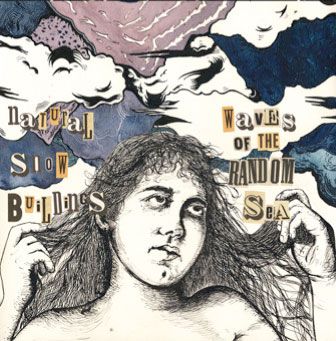
Read More
- Administrator
- Albums and Singles
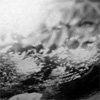 Giuseppe presents an extraordinarily sucessful and ecumenical set of turntable jams on the third and final EP in his Stunt trilogy. With fragmented samples bent into dance cadences and abrupt vocalizations serving as melodic leads, (third) Stunt smacks of both Oval's glitch-worship and Autechre's cold symmetries circa Tri Repetae. More soulful than either, Ielasi stays ahead of his influences by injecting his signature ambient glow into the mix and by adding a touch of dubstep grit.
Giuseppe presents an extraordinarily sucessful and ecumenical set of turntable jams on the third and final EP in his Stunt trilogy. With fragmented samples bent into dance cadences and abrupt vocalizations serving as melodic leads, (third) Stunt smacks of both Oval's glitch-worship and Autechre's cold symmetries circa Tri Repetae. More soulful than either, Ielasi stays ahead of his influences by injecting his signature ambient glow into the mix and by adding a touch of dubstep grit.
The first song on (third) Stunt's first side features a familiar, almost taunting melody, not unlike a group of kids singing "nyah nyah nyah" to each other. Instead of singing children, Ielasi utilizes a squeaky, trumpet-like tone to generate the effect (think of the duh duh duh melodies from Aphex Twin's "Windowlicker"). Behind it, a comical series of abruptly cut samples skip and jump unevenly, obeying the meter of a mostly inaudible mother pulse. Scratches, imperfect edits, breathing, and other vocal noises join this unlikely orchestra and, by the song's end, emulate the sounds of a grade school playground during recess, with the kids playing Double Dutch jump rope acting as impromptu conductors.
Later songs take on a more serious tone; one is almost threatening, and features the kind of atmosphere Burial frequently achieves, while another is at least superficially personal and employs a naive, somewhat innocent melody. But the same "anything-goes" approach that characterizes that first song persists through all the rest. Odd and ghostly voices float through the second side's second piece to the tune of a harp and garbage audio, and the concluding song uses resonant drums, chants, and conversational noise as accompaniment for a melody shared between a synthesizer and a piano. Hints of industrial cacophony also figure into the mix, but Ielasi never uses his sample-based approach as an excuse to indulge in noise or unmetered improv. Instead, he quietly guides his army of instruments through a loose dance, giving them equal chance to play and to obey his orders. Consequently, the entire record exhibits a unique organic vibe quite unlike anything produced by Oval, Autechre, or Burial.
Adding to the record's many charms and virtues is its brevity. Ielasi clearly had a vision going into this project, and he executes it concisely. Some songs, especially the first and last, end just as they're hitting their stride. Giuseppe gives them only the time they need to develop, then he ends them unceremoniously and moves on. That sense of economy is elemental to (third) Stunt's excellence and a major contributor to its endless replayability.
samples:
- Dekorder was kind enough to send us an LP, but that means we have no samples for this release. Sorry!
 
Read More
- Administrator
- Albums and Singles
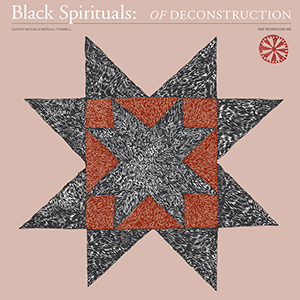 As a duo of drummer Marshall Trammell and guitarist/electronic specialist Zachary James Watkins, Black Spirituals work with unconventional arrangements. The immediate reference point I thought of, Lightening Bolt, is anything but appropriate as far as music goes. While that duo's sound was based upon rapid-fire freak-outs and spastic thrashing, Trammell and James are more deliberate, methodical, and disciplined, but no less thrilling or engaging.
As a duo of drummer Marshall Trammell and guitarist/electronic specialist Zachary James Watkins, Black Spirituals work with unconventional arrangements. The immediate reference point I thought of, Lightening Bolt, is anything but appropriate as far as music goes. While that duo's sound was based upon rapid-fire freak-outs and spastic thrashing, Trammell and James are more deliberate, methodical, and disciplined, but no less thrilling or engaging.
The opening moments of the 20 minute "Radiant" at first resemble nothing but an unplugged guitar cable, but that telltale buzz is soon shaped and molded into an ever expanding electronic burst.Trammell’s taut drumming slides in, locking into a funk-laden groove backed by electronic noise and propelled by a deep, rhythmic pulse.Eventually the drums relent to a wall of shrill electronics, pulling back to just a kick drum and skittering cymbals.
Watkins' wall of noise envelops everything and dominates the mix, all consuming but not at all harsh or unpleasant.The electronics are soon supplanted by what sounds to be a beautifully over-driven guitar, resulting in a rapid but structured duet that rivals the best of any free jazz record.The drums fade away toward the end, the guitar does not, ending the first half of the record on a nicely noisy note.
On "Black," a guitar amp drone is quickly blended with a melodic bit of guitar, comprising much of a lengthy free-form opening.Percussion is slowly introduced; first stuttering and tentative until launching full bore into frightening complexity.Even with their harsh approach, the guitar and electronics keep a distinct melodic flow going, while the drumming sounds as if it is teetering on the precipice of unadulterated chaos and destruction.
The shorter, final composition, "Body," is comparably a more loose and relaxed work.Erratic electronics and percussion swell up and then drop back into silence.The constantly shifting dynamics and jazz improvisations use the silence to excellent effect, reinforcing the impact and heaviness when the two are making their brilliant racket.
Black Spiritual's skeletal arrangements make for Of Deconstruction's greatest assets.With many of these pieces stripped down to just drums, electronics, and sometimes guitar, Watkins and Trammell's exceptional proficiency their respective instruments is showcased perfectly.Signifiers such as jazz and noise may be applicable, but in reality the duo’s work defies categorization and stands out as truly unique, a rarity these days.
samples:
 
Read More
- Administrator
- Albums and Singles
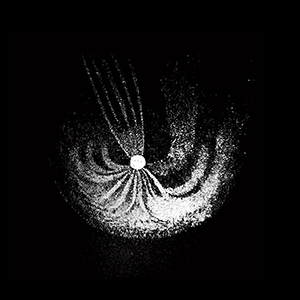 Blood Bright Star's Reuben Sawyer might be primarily known as a visual artist, but his growing discography as a musician indicates that he is a man of many talents. The Silver Head, a four song 12" has him locking into a classically minimalist groove that pulls brilliantly from post punk, krautrock, and metal. The results retain just the right amount of experimentation, while still resulting in a memorable suite of songs.
Blood Bright Star's Reuben Sawyer might be primarily known as a visual artist, but his growing discography as a musician indicates that he is a man of many talents. The Silver Head, a four song 12" has him locking into a classically minimalist groove that pulls brilliantly from post punk, krautrock, and metal. The results retain just the right amount of experimentation, while still resulting in a memorable suite of songs.
One of the defining qualities of this record is Sawyer's almost militant adherence to motorik grooves, the type that Can and Neu! made a name for themselves using.The tight, complex repetitive drumming throughout The Silver Head stretches to both sides of the vinyl, and is what really drew me in upon my first listening.On "Ash Through The Aethyr", the drums are tastefully placed in the mix, and wonderfully intertwined with the bass guitar.Sawyer’s vocals follow the deep monotone delivery that works just as well here as it did on the 1980s death rock albums I cannot help but associate the style with.
"Pale Sphere Apparition" is slower, and even bleaker than what preceded it.With the sparingly used vocals and funereal pace, I was definitely feeling parallels with The Cure circa 1980-1981 but with a monastic discipline as far as repetitive rhythms go.The short "Lunar Madness" shows Sawyer bringing in a little bit of light, but not much.Comparably it is more up-tempo and utilizes a lot of chiming guitar melodies, a sound not drastically removed from the first Interpol album.
The entire duration of the B-side is taken up by the long title song, which keeps the repetition but Sawyer implements more variation and diversity necessary for a piece of this length.Opening with a thin, fuzzy noise opening, a hint of southern guitar twang shows up ever so cautiously.Rawer tones and melodies slip through, and like a good minimalist record there is a staunch repetition that obscures small, but effective changes that slowly become apparent.
I cannot help but hear some similarities on The Silver Head with some of Horseback’s earliest work.Both feature the same hypnotic, minimalist approach to composition, placing more contemporary styles into a more traditionalist framework.The tone is very different, however:while Horseback's sound is a southern tinged Master of Reality, Blood Bright Star instead embraces Unknown Pleasures, with some contributions from its gothic antecedents.Rather than just being a repetitive droning work, Sawyer's output is memorable and at times even catchy, something few albums like this can manage.
samples:
 
Read More
- Administrator
- Albums and Singles
 Although Jeff Witscher is best known these days for his work as Rene Hell, he has actually been on the scene for quite a long time and has cycled through a number of both guises and styles.  One of his more beloved early projects was this one, which was reserved for his ambient drone work.  Unfortunately, most of Marble Sky's releases were only available as limited-run cassettes, so this collection of that rare material is quite a useful and timely one.  While there is probably nothing here that anyone will find stylistically revelatory in 2014, Witscher's execution is quite superb, striking the perfect balance between dreamy bliss and frayed, static-gnawed edges.
Although Jeff Witscher is best known these days for his work as Rene Hell, he has actually been on the scene for quite a long time and has cycled through a number of both guises and styles.  One of his more beloved early projects was this one, which was reserved for his ambient drone work.  Unfortunately, most of Marble Sky's releases were only available as limited-run cassettes, so this collection of that rare material is quite a useful and timely one.  While there is probably nothing here that anyone will find stylistically revelatory in 2014, Witscher's execution is quite superb, striking the perfect balance between dreamy bliss and frayed, static-gnawed edges.
The six songs assembled for this collection are culled primarily from Marble Sky's two "albums" that were originally released as cassettes on Witscher's own Callow God label: The Sad Return (2007) and Low God/Lady (2008).  That is a slight oversimplification, however, as Lady surfaced once before and an expanded version of The Sad Return was eventually issued on CD by Students of Decay, but the key thing is that this compilation is a solid assemblage of Marble Sky's greatest moments rather than a comprehensive, career-spanning overview.  I am perfectly happy with that, though anyone looking for a more complete picture will still have a handful of other tapes to track down.
For the most part, these six pieces are built upon warm, slow-moving and lush swells of synth chords, but only the lovely opening "Pulling Up Grass Under a Blanket" stays particularly restrained to that simple palette.  Even that piece presumably has some unrecognized elements at work, however, as its various dynamic high points feature distortion and oscillation that could have come from a guitar or a snarl of effects pedals.  Given Jeff's affiliation with the noise scene, it is probably safe to say that absolutely anything that sounded good was probably fair game.  "Dull Hue," for example, incorporates cloud-like swaths of shoegaze guitar roar into its crescendo, while other pieces feature endlessly sustained metal chords, a prominent patina of amp noise or tape hiss, sputtering static, or even an unexpected violin.
The best pieces, of course, are the ones that find the ideal balance between beautiful, dream-like reverie and Witscher's more caustic tendencies.  My favorite is currently Lady’s "Sunset on Low," which balances quavering organ-esque drones with an Angelo Badalamenti-indebted undercurrent of gently oscillating dread.  "A Shining Juniper" is similarly stellar–particularly the opening, as a wounded-sounding synth warble slowly emerges from a warm bass hum.  Later in the piece, Witscher unveils some neat textural laptop tricks, tweaking the synth motif from trebly shimmer to soothing white noise to warm, hollow swells before it all ultimately winds down.  Yet a third highlight is the aforementioned "Dull Hue," in which an achingly melancholy motif slowly and beautifully emerges from a layered bed of distortion and hiss.
As for the remaining pieces, they are generally quite good as well, though they do not grab my attention as much as some others.  Part of that is due to their length, I suppose, as both "What You Might Forget" and "Lea; Crossed Eyes" clock in around 15 minutes each.  "What You Might Forget" is a fairly drifting piece, as a heavenly chord progression slowly floats above an ocean of static and distortion without much change at all until the very end.  It does not necessarily need to change, as it is quite enjoyable as it is, but its amorphous nature inherently makes it a bit less striking than the more tightly composed pieces.  "Lea," on the other hand, is considerably more ambitious, passing through several different movements.  Unfortunately, several motifs (particularly the sustained distorted chord near the end) overstay their welcome, which causes the piece to drag a bit.  That is one of the perils of cassette culture, I suppose, as it is very tempting to stretch a piece to avoid leaving blank space.  Now that "Lea" is not filling the side of a tape, however, it just feels needlessly long.
That said, a piece like "Lea; Crossed Eyes" would probably be a near-highlight on many other drone albums–it seems lacking here solely because of the superior quality of its surroundings.  Aside from a few minor wobbles, this is probably one of the finer drone albums that will be released this year: Jeff Witscher circa 2008 was one hell of a craftsman and having all of his best Marble Sky work in one place like this makes for a wonderful and absorbing listen.  Certainly other artists have since surpassed this material in various specific ways since it was recorded, but few have succeeded in such a holistic way at riding the precarious line that separates straightforward drone from noise and heavier experimental leanings.  This is solid, meat-and-potatoes ambient drone done both distinctively and exactly right.
 
Read More
- Administrator
- Albums and Singles

This latest project by the Hamburg-based musician, composer, and futurist, Felix Kubin, (his second release on Dekorder) is a collaboration with the contemporary music chamber group, ensemble Intégrales, and the reknowned German underground pop producer and sound engineer, Tobias Levin.
Echohaus was recorded in and around Levin's Electric Avenue studio in the basement of WESTWERK, a former squat and cultural centre for non-commercial art and music in Hamburg. A special recording technique was developed for the project whereby the musicians played simultaneously in separate rooms, connected to one and other only by headphones. This was done in order to achieve a lively,“cinematic" sound that made use of the particular dynamics of the rooms and amplified mechanical details. The rooms, each of which had a different acoustic character, were used as natural echo chambers. Kubin and the composer Burkhard Friedrich, former member of ensemble Intégrales, provided the musicians with simple graphic scores or basic descriptions of the compositions; all subsequent material was developed on the fly. Kubin was in the mixing room giving instructions and suggestions, while the musicians played and improvised, adding their own ideas to the project.
No artificial reverb or effects were added to the recordings. The different types of rooms and microphones, noises inside and outside of the studio, as well as the unusual interrelationship between the physically isolated players became part of the process. All the tracks were recorded in one take without any additional layers or track-by-track recordings. After a five-day recording session Kubin and Levin created various mixes which Kubin then edited over a period of several months.
The final results mark yet another radical departure from Kubin's trademark Sci-Fi Pop sound, blending the aesthetics of academic contemporary music, film soundtracks and improvised music with a strong focus on room-specific natural acoustics.
Felix Kubin has released highly acclaimed albums on A-Musik, Dekorder and his own Gagarin label. He has recently been featured on the front cover of The Wire magazine, released his first short movie collection, directed several radio plays and is currently finishing the production on his forthcoming Sci-Fi Pop album.
Burkhard Friedrich (born 1962 in Berlin) is a composer of several musictheatres, film music and chamber music, performed by ensemble Intégrales (D), Phoenix Ensemble (CH), The Austrian Ensemble (A) and others, saxophonplayer and improvising musician. He is regularly collaborating with Video-artists and theatrical directors. For further information please go to: www.burkhard-friedrich.com
Ensemble Intégrales was founded by Burkhard Friedrich and Barbara Lüneburg. Their repertoire includes classics by Karlheinz Stockhausen, John Cage, Iannis Xenakis, Alfred Schnittke, Giacinto Scelsi, Steve Reich, Alvin Lucier, György Ligeti, Frederic Rzewski, James Tenney, Morton Feldman, Cornelius Cardew, Mauricio Kagel and new music from China, Austria and the UK.
Tobias Levin is a german producer and engineer. The bands and musicians he has worked with range from pop to avantgarde, including Kammerflimmer Kollektief, Charles Curtis, To Rococo Rot, Tied & Tickled Trio, Christian Naujoks, Christoph Kurzmann & John Butcher, Augsburger Tafelconfect & Lol Coxhill or Kreidler. He is also a founding member of legendary avant pop group Cpt. Kirk &.
Read More
- Administrator
- Albums and Singles
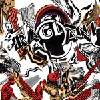 Joseph Raglani uses sine/square wave generator, synth, guitar, voice, melodica, flute and electronics on five intriguing and accessible pieces. The engaging tension, emotional depth and narrative sensibility in Of Sirens Born feels similar to watching a film about explorers entering a strange landscape.
Joseph Raglani uses sine/square wave generator, synth, guitar, voice, melodica, flute and electronics on five intriguing and accessible pieces. The engaging tension, emotional depth and narrative sensibility in Of Sirens Born feels similar to watching a film about explorers entering a strange landscape.
Raglani invests this largely instrumental album with enough sweetness to attract people who might usually avoid musical discord. However, the crunch and bite is here and cleverly positioned to satisfy those who welcome dissonance as a kind of exhilarating bliss. As mentioned, the cinematic quality is obvious, and opener "Rivers In" is strongly suggestive of motion or travel. The throbbing synth in the second half of the track is reminiscent of visual blurriness and of images moving in and out of focus. Then, at just over ten minutes "In The Promise of Wood and Water" is the longest track here. Like the entire record it has a slow pace but the contrast, peaks, and development seem like a journey within a journey.
On "Perilous Straits" the atmosphere might be a depiction of a craft floating dangerously close to rocks. The portentous alarming quality of the music is achieved by some thumping percussion and layers of a wailing siren-like racket. The added snap on this track is probably derived from Raglani switching to square wave generator. To give some idea of the sound difference, as I understand it, the visual display on the generator would show square blocks, rather than the flowing 'S' shape of the sine wave. The start of "Washed Ashore" is similarly violent but it is worth sticking with until the melodica comes to the fore and the music subsides into gentle lapping calm. The album's finale is "Jubilee," which flickers between ethereal hiss, bracing distortion, and euphoric multi-layering. The sense of danger, spirituality, excitement and celebration in the track brings to mind scenes unfolding in jungle clearings glimpsed from a boat adrift on a river: joyful nuptials, cannibalism, ritual sacrifice, animals grazing, fire, or a feast. There's also an unintentionally amusing overlap with The Prime Time Sublime Orchestra's A Life in A Day of A Microorganism, specifically the bits where daydreaming "dad" floats off to "an unknown tropical island somewhere deep in the Pacific, shipwrecked without contact to the outside world, he's the only man floating on a white fluffy cloud surrounded by young and nubile half-naked female natives who pamper him and tend to his most animalistic needs...".
Joseph Raglani has been active in St Louis for several years releasing CDRs and vinyl. He gets the balance right on Of Sirens Born, shows a lot of promise, and lives up to the accompanying praise from Keith Fullerton Whitman. This release is more exciting than ambient, indeed at times he almost conjures a ghostly sonic apparition of the more thrilling sections of The Faust Tapes. Raglani has more strings to his bow, too, for example there’s a delightfully spaced-out version of Big Star's "I'm In Love with a Girl" on his MySpace page.
samples:
Read More
- Administrator
- Albums and Singles
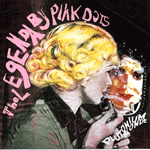 The Dots are as focused and as diverse a group as I can name. For over 25 years they've been releasing record after record of bizarre and colorful music. Even with such a voluminous catalog behind them, their output remains completely unique and peerless. Plutonium Blonde is a trance-like, somewhat awkward record that meshes their eccentric pop sensibilities with dark, aggressive machine music.
The Dots are as focused and as diverse a group as I can name. For over 25 years they've been releasing record after record of bizarre and colorful music. Even with such a voluminous catalog behind them, their output remains completely unique and peerless. Plutonium Blonde is a trance-like, somewhat awkward record that meshes their eccentric pop sensibilities with dark, aggressive machine music.
ROIR
From the start it is obvious that this record is a move away from the jam-band tendencies that have popped up in the Dots' music over the past couple of records. The album opener, "Torch Song," is an aggressive and concise electronic nightmare that thrives on synthesized beats and cascades of blurry keyboard effects. There are guitars on this record, but they take a back seat to the electronic errata conjured up by The Silverman and Edward Ka-Spel. The emphasis on computerized music isn't just a stylistic turn for the band, but a natural continuation of the themes that run through Ka-Spel's lyrics. From the '50s era model on the cover, the cracked mirror she's holding, and the truncated image of a mushroom cloud inside of the booklet, to the themes of paranoia, isolation, and distress in the song's words, it is clear that technology and its effect on mankind is a central theme on the record. When the odd guitar or errant flute emerges from the flux of noise, drone, and found sounds that populate the majority of these songs, they bring a good deal of comfort and relief. Whether or not that relief is necessary is something worth considering, however.
Some of the songs on Plutonium Blonde feature an approach to songcraft that fans of the Chemical Playschool series will be happy to hear. Stuttering tape collages, dark synth pads, organic burps, and quiet percussive elements swim by beneath Ka-Spel's narratives on both "An Arm and a Leg" and "Oceans Blue." The intensity and creepiness of the vocals harmonize with the brooding haziness of the instrumentation creating a strong synthesis of abstract, psychedelic sound and conventional song-writing. Both "Torchsong" and "Rainbows Too?" favor a semi-melodic, direct approach to creating atmosphere, but are also the first two songs on the album. Plutonium Blonde thus feels like a slow descent into unfamiliar waters, one that ends up with the crushing woe of "Cubic Caesar." The song begins with a biting quip: "My learning curve was so acute it formed a perfect circle / My whole wide world was virtual so I sank back in my shell." From there Ka-Spel utilizes a combination of dry, phone-like tones and half-dead, choking keyboards to spin a tale of slowly atrophying ideas and feelings. Martijn De Kleer's guitar work is most successfully worked into mix on this song; he draws a blues-like desolation out of his strings that emphasize the loneliness present in Ka-Spel's lyrics. The song reaches a climax as Ka-Spel muses over the safety of virtual reality: "I know that far away exists mysterious adventures / A life beyond / Uncensored where there's nothing guaranteed / It's not for me / Oh I'll live with it."
My only complaints about this outing revolve around a pair of songs that interrupt the slow descent I described earlier. While "A World with No Mirrors" and "My First Zonee" draw their lifeblood from the same topics found in all the other songs, the musical aesthetic on both are so different from everything else on the record that they seem almost entirely out of place. "A World with No Mirrors" is composed of acoustic guitar and flute and sounds pastoral despite its nocturnal and ambient ending. "My First Zonee" is, on the other hand, a jaunty piece that only emphasizes how difficult it is to use a saxophone on a rock record and not come away sounding cheesy. Were these two songs removed or replaced, the album might be exceedingly bleak and somber. Yet, I find myself wanting to skip past both in order to get to the meat of the record. "Faded Photograph" manages to lighten the mood without breaking the album's continuity and so both the aforementioned songs seem just a bit superfluous. That being said, both songs stand well on their own and are nowhere near distracting enough to ruin the record. I suppose I'm simply more endeared to Ka-Spel's darker creations, which is why Plutonium Blonde keeps me coming back. It is twisted, dark, and filled with a multitude of musical approaches that few (if any) other musicians have ever even thought of blending.
samples:
Read More


